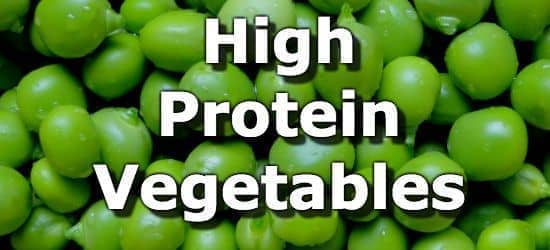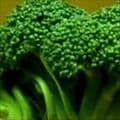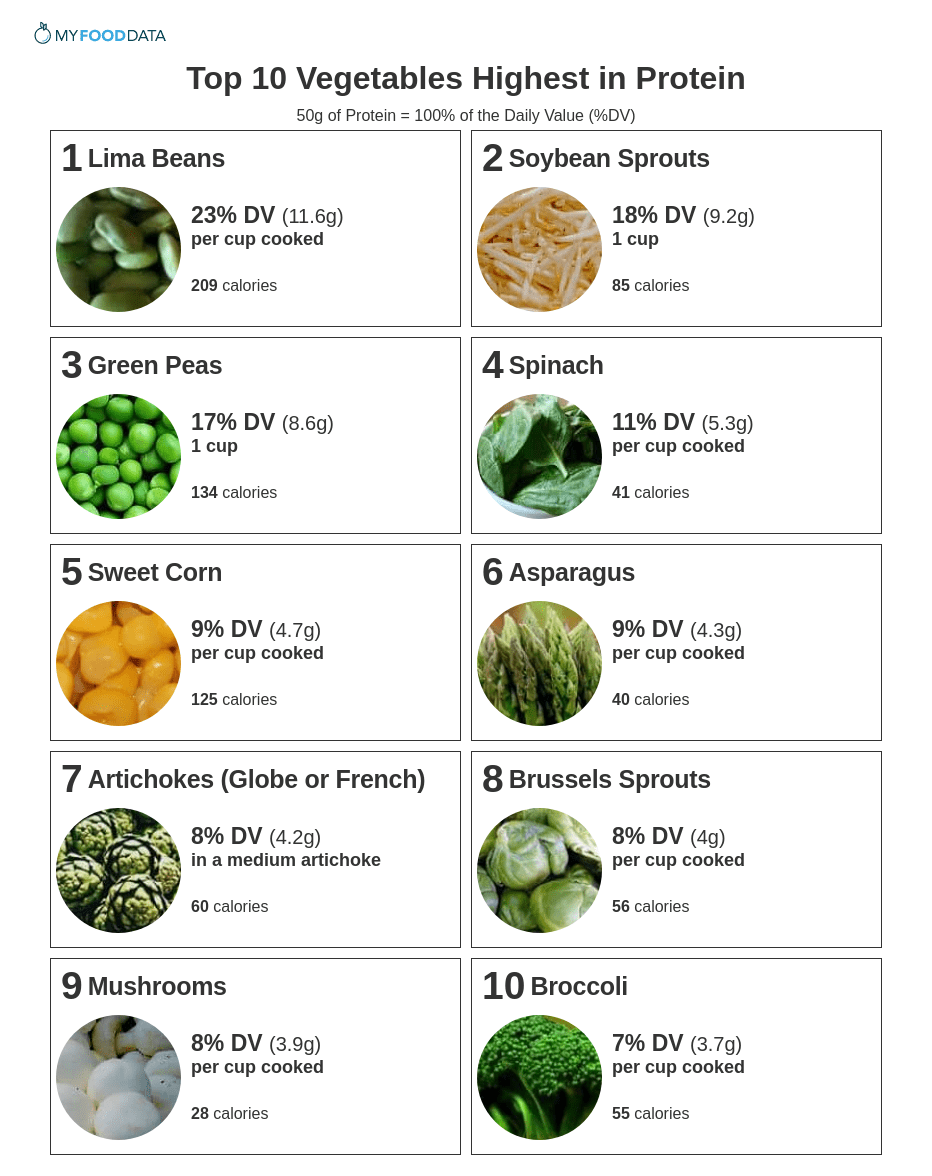Top 10 Vegetables Highest in Protein

Proteins are an important building block for all living things, and have many essential functions in the human body. This is why getting enough protein in your diet is crucial for good health.
Although many people think of meat when they're looking for protein sources, the truth is that many plant foods, including some vegetables, also have high levels of protein.
The current daily value (DV) for protein is 50 grams per day and is a target meant for most people. (1) Vegetables high in protein include lima beans, bean sprouts, green peas, spinach, sweet corn, asparagus, artichokes, brussels sprouts, mushrooms, and broccoli.
For more vegetarian and vegan sources of protein see the articles on beans and legumes highest in protein, and grains high in protein, and high protein nuts.
You can also see the uncurated list of 200 vegetables high in protein.
High Protein Vegetables List
 1 Lima Beans
1 Lima Beans| Protein per Cup Cooked | Protein per 100g | Protein per 200 Calories |
|---|---|---|
| 11.6g (23% DV) | 6.8g (14% DV) | 11.1g (22% DV) |
 2 Soybean Sprouts
2 Soybean Sprouts| Protein 1 Cup | Protein per 100g | Protein per 200 Calories |
|---|---|---|
| 9.2g (18% DV) | 13.1g (26% DV) | 21.5g (43% DV) |
 3 Green Peas
3 Green Peas| Protein 1 Cup | Protein per 100g | Protein per 200 Calories |
|---|---|---|
| 8.6g (17% DV) | 5.4g (11% DV) | 12.8g (26% DV) |
 4 Spinach
4 Spinach| Protein per Cup Cooked | Protein per 100g | Protein per 200 Calories |
|---|---|---|
| 5.3g (11% DV) | 3g (6% DV) | 25.8g (52% DV) |
More Dark Leafy Greens High in Protein
- 5g (10% DV) per cup of cooked collard greens
- 3.5g (7% DV) per cup of cooked mustard greens
- 3.5g (7% DV) per cup of cooked Swiss chard
- 2.5g (5% DV) per cup of cooked kale
Note: Cooking reduces the water content of the greens, allowing you to eat more greens and protein per cup.
 5 Sweet Corn
5 Sweet Corn| Protein per Cup Cooked | Protein per 100g | Protein per 200 Calories |
|---|---|---|
| 4.7g (9% DV) | 3.3g (7% DV) | 7.6g (15% DV) |
 6 Asparagus
6 Asparagus| Protein per Cup Cooked | Protein per 100g | Protein per 200 Calories |
|---|---|---|
| 4.3g (9% DV) | 2.4g (5% DV) | 21.8g (44% DV) |
 7 Artichokes (Globe or French)
7 Artichokes (Globe or French)| Protein in a Medium Artichoke | Protein per 100g | Protein per 200 Calories |
|---|---|---|
| 4.2g (8% DV) | 3.3g (7% DV) | 13.9g (28% DV) |
 8 Brussels Sprouts
8 Brussels Sprouts| Protein per Cup Cooked | Protein per 100g | Protein per 200 Calories |
|---|---|---|
| 4g (8% DV) | 2.6g (5% DV) | 14.2g (28% DV) |
 9 Mushrooms
9 Mushrooms| Protein per Cup Cooked | Protein per 100g | Protein per 200 Calories |
|---|---|---|
| 3.9g (8% DV) | 3.6g (7% DV) | 27.5g (55% DV) |
More Mushrooms High in Protein
- 4g (8% DV) per cup of cooked portobello
- 3.5g (7% DV) per cup of cooked shiitake
- 3g (6% DV) per cup of oyster mushrooms
- 2g (4% DV) per cup of morels
- 2g (4% DV) per cup of cremini
- 1.5g (3% DV) per cup of enokis
 10 Broccoli
10 Broccoli| Protein per Cup Cooked | Protein per 100g | Protein per 200 Calories |
|---|---|---|
| 3.7g (7% DV) | 2.4g (5% DV) | 13.6g (27% DV) |
Printable One Page Sheet

Less Common Protein Rich Vegetables
| Food | Serving | Protein |
|---|---|---|
| 1 Hubbard Squash | 1 cup | 10% DV (5.1g) |
| 2 Dried Seaweed (Spirulina) | 1 tblsp | 8% DV (4g) |
| 3 Bamboo Shoots | 1 cup | 8% DV (3.9g) |
| 4 Jute Potherb | 1 cup | 6% DV (3.2g) |
| 5 Pak-Choi (Bok Choy) | per cup cooked | 5% DV (2.7g) |
| 6 Pumpkin Leaves | 1 cup | 4% DV (1.9g) |
| 7 Broccoli Raab (Rapini) | per cup raw | 3% DV (1.3g) |
About the Data
Data for the curated food lists comes from the USDA Food Data Central Repository.
You can check our data against the USDA by clicking the (Source) link at the bottom of each food listing.
Note: When checking data please be sure the serving sizes are the same. In the rare case you find any difference, please contact us and we will fix it right away.
About Nutrient Targets
Setting targets can provide a guide to healthy eating.
Some of the most popular targets include:- Daily Value (%DV) - The daily value (%DV) is a general guideline for consumption that will prevent deficiency of a particular nutrient in most people. The %DV refers to the percentage of an amount that's found in a single serving of a food. It also accounts for absorption factors. It is set by the U.S. FDA.
- Recommended Dietary Allowance (%RDA) - The RDA sets an average daily dietary intake level that is sufficient to meet the nutrient requirements of nearly all (97.5%) healthy individuals. It's more specific than the daily value, and varies by age and gender. The RDA is set by the US National Instutites of Health.
- Reference Dietary Intake (%RDI) -The reference dietary intake is similar to the recommended daily allowance, but is specific to age and gender. The RDI for amino acids is set by the U.N. World Health Organization.
- Adequate Intake (%AI) - This value is primarily used in reference to omega-3 and omega-6 fats. The Adequate Intake is set by the U.S. Institute of Medicine. Because there is less evidence to determine the ideal targets for consumption of these nutrients, the specific amount is considered to be less reliable. Using the term Adequate Intake, rather than one of the other terms, helps to emphasize that the ideal intake of that particular nutrient has not yet been scientifically determined.
See the Guide to Recommended Daily Intakes for more information.
Want to set your own targets? Sign up for an account and set custom targets in the daily meal planner.From the Nutrient Ranking Tool
Use the ranking tool links below to select foods and create your own food list to share or print.
- Foods High in Protein
- Foods Low in Protein
- Vegetables High in Protein
- Fruits High in Protein
- Vegetarian Foods High in Protein
- Nuts High in Protein
- Grains High in Protein
- Beans High in Protein
- Dairy High in Protein
- Breakfast Cereals High in Protein
- Fast Foods High in Protein
View more nutrients with the nutrient ranking tool, or see ratios with the nutrient ratio tool.
Related
Data Sources and References
Try the recipe nutrition calculator, or daily meal planner.
Create a free account to log and track foods.

